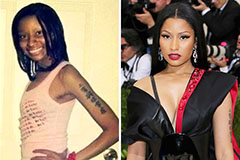From the captivating and often uncertain whole world of specialist fumbling, championship belts hold a value that transcends plain ornamentation. They are the best symbols of success, effort, and prominence within the made even circle. Among the most distinguished and historically abundant titles in the sector are the WWF Champion Belts, a family tree that dates back to the extremely foundation of what is currently referred to as copyright. These belts have not only stood for the pinnacle of battling prowess however have likewise developed in layout and significance alongside the promo itself, ending up being iconic artifacts valued by followers worldwide.
The trip of the WWF Champion started in 1963 when the World Wide Fumbling Federation (WWWF), the precursor to the WWF and ultimately copyright, was developed. Following a conflict with the National Wrestling Partnership (NWA), Northeast marketers developed their own banner and acknowledged Buddy Rogers as their inaugural WWWF World Heavyweight Champ on April 25, 1963. Surprisingly, some accounts suggest that Rogers was awarded the WWWF title belt, which was an old USA title he already possessed, as a placeholder until a new design could be created.
Throughout the WWWF period (1963-1979), the champion belt undertook a number of versions, frequently coinciding with the periods of its most famous owners. Bruno Sammartino, the famous "Living Legend," held the title for an impressive mixed total of over 4,000 days across 2 reigns. During his time, numerous designs were seen, consisting of one shaped like the contiguous United States, highlighting the local roots of the promotion. Later on, a much more conventional design including 2 wrestlers grappling above an eagle became associated with Sammartino's second reign and the champions who followed him, such as "Superstar" Billy Graham and Bob Backlund.
The year 1979 marked a significant shift as the WWWF officially ended up being the Whole world Wrestling Federation (WWF). This rebranding would at some point result in adjustments in the championship's name and look. In the very early 1980s, as the WWF started its climb towards coming to be a international phenomenon, a larger, eco-friendly leather belt with large gold plates was presented. This design included a wrestler holding a champion with the globe behind him, absolutely announcing the holder as the "World Champ." Especially, the side plates of this version listed the family tree of previous champions, a custom that acknowledged the title's rich history. This famous belt was held by numbers like Bob Backlund, The Iron Sheik, and, most famously, Hulk Hogan, that carried it throughout the "Hulkamania" era, a duration of extraordinary mainstream success for the WWF.
The mid to late 1980s saw the intro of what several think about among one of the most beloved layouts in wrestling background: the "Winged Eagle" championship. Debuting in very early 1988, with Hulk Hogan as the first holder, this style featured a majestic eagle with outstretched wings as the focal point, flanked by smaller side plates. The "Winged Eagle" belt came to be a icon of excellence throughout the late 1980s "Rock 'n' Fumbling" age and well right into the 1990s " Brand-new Generation" age. Legendary champions such as Randy Savage, The Ultimate Warrior, Bret "Hitman" Hart, and Shawn Michaels all proudly held this variation of the title. The "Winged Eagle" even transitioned into the very early years of the " Perspective Period," with "Stone Cold" Steve Austin being the last full time champ to use it.
The "Attitude Period," which exploded in popularity in the late 1990s, brought with it a more hostile and edgy visual, shown in the WWF Championship design. In late 1998, the " Huge Eagle" belt was introduced. This design included a bigger central plate with a noticeable WWF " scrape" logo design, representing the business's contemporary identification. While preserving a feeling of status, the " Huge Eagle" layout lined up with the rebellious spirit of the age and was held by famous numbers like "Stone Cold" Steve Austin, The Rock, and Mick Foley.
As the calendar turned to the new centuries, the WWF went through an additional makeover, ending up being World Fumbling Entertainment (copyright) in 2002. This period likewise saw the unification of the WWF Champion with the copyright Champion (acquired after copyright's acquisition of Whole world Championship Fumbling). The " Undeniable" championship was stood for by both the " Large Eagle" and the copyright's "Big Gold Belt" being held all at once. This unification was short-lived, as the re-established copyright split its roster into two brands, Raw and copyright, bring about the production of a new World Heavyweight Champion for the Raw brand, while the initial title came to be special to copyright and was renamed the copyright Champion.
Since then, the copyright Champion has actually continued to develop in name and layout. In the mid-2000s, John Cena introduced the "Spinner" belt, a controversial however unquestionably eye-catching design featuring a large copyright logo that might rotate. This reflected Cena's character and appeal to a more youthful audience. Subsequent layouts have actually intended to blend modern-day appearances with wwf belts a feeling of history and prestige.
In recent years, particularly considering that April 2022, the copyright Championship has actually been defended along with the copyright Universal Championship as the Indisputable copyright Universal Championship, though both titles preserved their specific family trees. Initially represented by both belts, a single, unified style eventually emerged, adorned with black diamonds and the holder's customized side plates. Since April 13, 2025, Cody Rhodes holds the Undisputed copyright Champion, having unified it after defeating Roman Regimes at copyright XL in 2024. Following his success, copyright formally renamed the merged title to the Indisputable copyright Championship.
The WWF Champion Belts, throughout their numerous iterations, have actually served as more than simply prizes. They represent legacies, ages, and the countless tales informed within the fumbling ring. Each layout is fundamentally linked to the champions that held them and the periods they specified. From the timeless magnificence of the "Winged Eagle" to the vibrant declaration of the " Rewriter" and the current unified design, these belts are tangible items of wrestling history, promptly recognizable signs of greatness worldwide of expert wrestling. Their advancement mirrors the development of the company itself, regularly adapting to the times while for life honoring the abundant practice whereupon they were developed.
 Jennifer Grey Then & Now!
Jennifer Grey Then & Now! Barret Oliver Then & Now!
Barret Oliver Then & Now! Marques Houston Then & Now!
Marques Houston Then & Now! Julia Stiles Then & Now!
Julia Stiles Then & Now! Nicki Minaj Then & Now!
Nicki Minaj Then & Now!